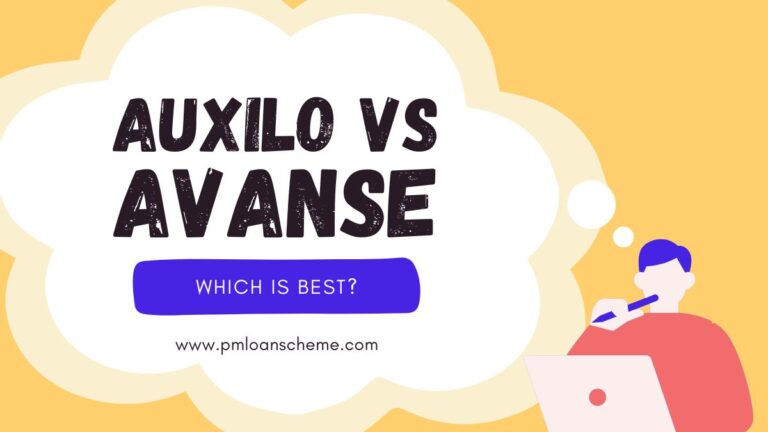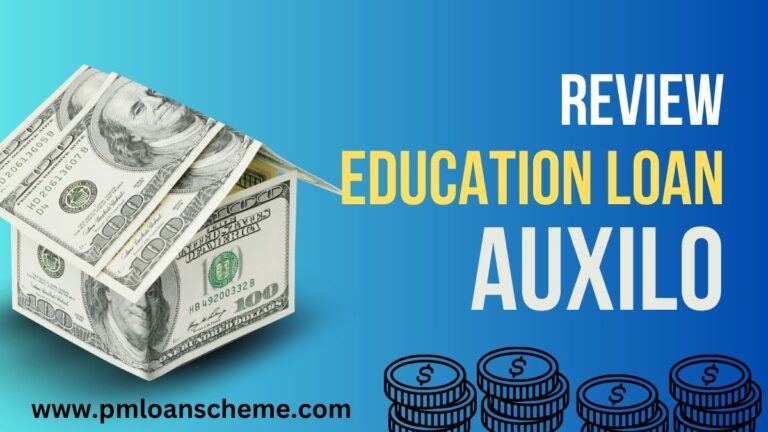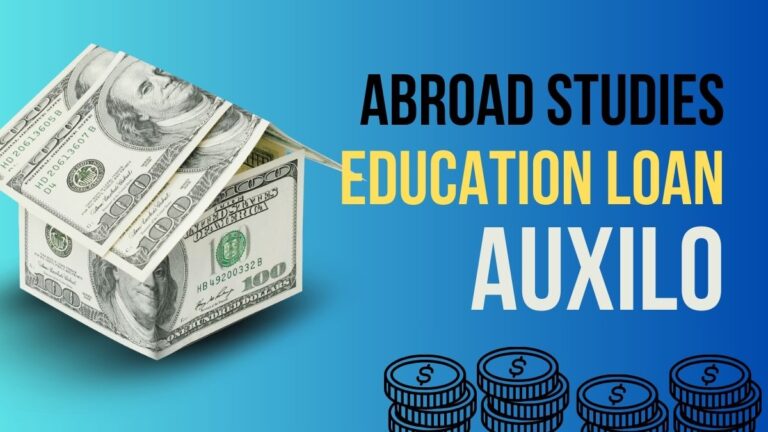Best Student Loans for Bad Credit
Pursuing higher education is a dream for many, but financial constraints can make it feel out of reach, especially for students with bad credit. According to the FICO scoring model, a credit score below 580 is often considered “poor,” and this can complicate the process of obtaining student loans. Traditional lenders may shy away from providing loans to individuals with low credit scores, but fortunately, there are alternatives available.
In this guide, we will delve into the best student loan options for those with bad credit, explore the factors that influence your borrowing capacity, and provide tips to improve your credit situation. Whether you’re a current student or planning to return to school, this article aims to empower you with the knowledge needed to make informed financial decisions.

Understanding Student Loans and Bad Credit
What Are Student Loans?
Student loans are financial aid designed to help students cover the costs associated with their education. These loans typically come in two categories: federal loans and private loans.
- Federal Student Loans are funded by the government and generally offer lower interest rates, flexible repayment options, and various benefits like deferment and forgiveness programs. They are often the first choice for students seeking financial assistance.
- Private Student Loans are offered by banks, credit unions, and other financial institutions. The terms and conditions can vary significantly among lenders, and they often rely on the borrower’s credit history to determine eligibility and interest rates.
The Impact of Bad Credit
Having bad credit can limit your options for financing your education. Lenders may view you as a higher risk and might charge higher interest rates or require a cosigner. A poor credit score can also affect your eligibility for certain loans, particularly private ones.
However, it’s essential to understand that bad credit is not a permanent condition. With time and effort, you can improve your credit score, which can help you access better loan options in the future.
Best Student Loans Available for Bad Credit
Types of Student Loans Available for Bad Credit:
1. Federal Student Loans
Federal student loans are often the best option for students with bad credit. These loans do not require a credit check, making them accessible to nearly all students. Here are some of the key federal loan options:
- Direct Subsidized Loans: Available to undergraduate students who demonstrate financial need. The government pays the interest while you’re in school at least half-time, during the grace period, and during deferment periods.
- Direct Unsubsidized Loans: Available to undergraduate and graduate students, these loans do not require a demonstration of financial need. Interest accrues while you’re in school, but you can choose to defer payments until after graduation.
- Direct PLUS Loans: Available to graduate students and parents of dependent undergraduate students. These loans require a credit check, but you can still qualify with a low credit score if you can show that you do not have an adverse credit history, such as bankruptcy or default.
- Federal Perkins Loans: Though the program ended in 2017, some schools may still have funds available. Perkins loans are low-interest loans for students with exceptional financial need.
Apply for Federal Student Loans.
Benefits of Federal Student Loans:
- Fixed interest rates
- Flexible repayment plans
- Income-driven repayment options
- Potential for loan forgiveness through programs like Public Service Loan Forgiveness (PSLF)
2. Private Student Loans
Private student loans can be a viable option for those with bad credit, although they often come with higher interest rates compared to federal loans. It’s crucial to shop around for the best terms. Here are some private lenders that offer options for students with bad credit:
- SoFi: Known for its competitive interest rates and member benefits, SoFi offers private student loans to students with credit scores as low as 680. If you don’t have a strong credit history, applying with a cosigner can improve your chances.
- Earnest: This lender focuses on a holistic approach to underwriting, which means they consider your financial situation beyond just your credit score. They offer customizable repayment plans, making it easier to manage your loan after graduation.
- Discover Student Loans: Discover offers loans to students regardless of credit history, although they may require a cosigner if your credit score is low. Their loans come with no fees, and you can earn cashback rewards for good grades.
- Citizens Bank: Citizens Bank offers loans with competitive interest rates, and they allow you to apply with a cosigner. They also offer discounts for automatic payments.
- College Ave: This lender provides a variety of repayment options and allows you to apply with a cosigner to help secure better rates.
Key Considerations for Private Loans:
- Interest rates can be variable or fixed
- Terms and conditions vary widely
- Potential for fees, such as origination or late fees
- May require a credit check
3. Credit Unions
Credit unions often provide loans with more lenient requirements compared to traditional banks. If you’re a member of a credit union, you might have access to student loans tailored for those with bad credit. Credit unions may also offer lower interest rates and more personalized service.
4. Alternative Lenders
In addition to traditional lenders, several alternative lending platforms cater to students with bad credit. These platforms may focus on income-based repayment options or provide loans based on other factors, such as future earning potential.
Tips for Securing Student Loans with Bad Credit
- Check Your Credit Report: Before applying for loans, review your credit report for errors. You can obtain a free credit report from each of the three major credit bureaus (Equifax, Experian, and TransUnion) annually at AnnualCreditReport.com. Dispute any inaccuracies you find, as they can negatively impact your score.
- Consider Federal Loans First: Federal student loans should be your first choice since they do not require a credit check and offer numerous benefits. Ensure you fill out the Free Application for Federal Student Aid (FAFSA) to determine your eligibility for federal aid.
- Improve Your Credit Score: Take steps to improve your credit score before applying for loans. Pay down existing debts, make payments on time, and avoid taking on new debt. Even small improvements in your score can make a difference in your borrowing capacity.
- Apply with a Cosigner: If you have a family member or friend with good credit, consider asking them to be your cosigner. A cosigner can help you secure better interest rates and loan terms. However, keep in mind that the cosigner is responsible for the loan if you default.
- Research Different Lenders: Don’t settle for the first loan offer you receive. Shop around and compare rates, terms, and repayment options from multiple lenders. Use online comparison tools to help streamline the process.
- Explore Scholarships and Grants: While loans can help you cover costs, applying for scholarships and grants can reduce the amount you need to borrow. Research available scholarships based on your field of study, background, and interests.
- Understand Loan Terms: Before accepting any loan offer, ensure you fully understand the terms and conditions. Pay attention to interest rates, repayment plans, and any fees associated with the loan.
- Be Mindful of Borrowing Limits: While it may be tempting to borrow the maximum amount available, be cautious. Only borrow what you need to cover your educational expenses. Excessive borrowing can lead to overwhelming debt after graduation.
The Application Process for Student Loans
1. Fill Out the FAFSA
The first step in obtaining federal student loans is to complete the FAFSA. This application collects information about your financial situation and determines your eligibility for federal aid, including grants, work-study, and loans. It’s essential to fill out the FAFSA as soon as possible, as some aid is distributed on a first-come, first-served basis.
2. Review Your Financial Aid Offer
Once you submit your FAFSA, you will receive a financial aid offer from your school, detailing the types and amounts of aid available to you. Review this carefully and consider the federal loan options before turning to private lenders.
3. Research Private Lenders
If you need additional funding beyond federal loans, begin researching private lenders. Compare interest rates, repayment terms, and eligibility criteria to find a suitable lender.
4. Gather Required Documentation
When applying for private loans, be prepared to provide documentation such as your income, credit history, and any co-signer’s financial information. Lenders may also ask for proof of enrollment or acceptance into an educational program.
5. Submit Your Application
Complete the application for your chosen lender, ensuring you provide accurate and truthful information. Some lenders may allow you to prequalify, which gives you an idea of your loan terms without affecting your credit score.
6. Review Loan Terms and Accept
Once approved, review the loan terms carefully. Make sure you understand the interest rate, repayment schedule, and any fees associated with the loan. If you agree to the terms, sign the loan agreement.
Repayment Options for Student Loans
Understanding repayment options is crucial, especially for borrowers with bad credit. Here are the main repayment options available for federal and private student loans:
Federal Loan Repayment Plans
- Standard Repayment Plan: Fixed payments over 10 years. This plan is available for all federal loans.
- Graduated Repayment Plan: Payments start low and gradually increase every two years, with the loan paid off in 10 years. This option may be beneficial if you expect your income to increase over time.
- Extended Repayment Plan: Available for borrowers with more than $30,000 in federal loans, this plan extends the repayment period to 25 years, reducing monthly payments but increasing total interest paid.
Income-Driven Repayment Plans:** These plans base your monthly payment on your income and family size. There are several types, including:
- Income-Based Repayment (IBR)
- Pay As You Earn (PAYE)
- Revised Pay As You Earn (REPAYE)
- Income-Contingent Repayment (ICR) After 20 or 25 years of qualifying payments, any remaining balance may be forgiven.
Private Loan Repayment Options
Private lenders often have different repayment options. Some may offer flexible repayment plans or allow you to defer payments while in school. However, it’s essential to read the terms carefully, as private loans generally do not offer the same protections as federal loans.
The Importance of Financial Literacy
As you navigate the world of student loans, improving your financial literacy can empower you to make informed decisions. Here are some key concepts to understand:
- Interest Rates: The cost of borrowing money is expressed as a percentage of the loan amount. Fixed rates remain the same throughout the loan term, while variable rates can fluctuate based on market conditions.
- Loan Terms: The duration of the loan repayment period can significantly impact your monthly payments and total interest paid over the life of the loan.
- Credit Scores: Understanding how credit scores work can help you take proactive steps to improve your score. Familiarize yourself with the factors that influence credit scores, such as payment history, credit utilization, length of credit history, types of credit, and recent inquiries.
- Budgeting: Developing a budget can help you manage your finances and prioritize loan payments after graduation. Use budgeting tools or apps to track your income and expenses.
- Debt Management: Learn about strategies for managing debt, including prioritizing high-interest loans and considering consolidation or refinancing options in the future.
Conclusion
Securing student loans with bad credit may seem challenging, but numerous options are available to help you finance your education. By prioritizing federal loans, exploring private lenders, and considering cosigner options, you can find the right financial support for your academic journey.
Improving your credit score and understanding the loan application process can further enhance your chances of obtaining favorable terms. Remember, pursuing higher education is an investment in your future, and with careful planning and informed choices, you can achieve your academic and career goals without being overwhelmed by debt.
FAQs
Can I get a student loan with bad credit?
Yes, students with bad credit can obtain student loans, particularly federal loans, which do not require a credit check.
What is considered bad credit?
A credit score below 580 is typically considered bad credit, although this can vary depending on the scoring model used.
Are there alternatives to student loans?
Yes, scholarships and grants are excellent alternatives to student loans, as they do not require repayment. Work-study programs can also provide financial support while allowing you to gain work experience.
How can I improve my credit score?
To improve your credit score, pay down existing debts, make timely payments, avoid opening new accounts unnecessarily, and check your credit report for errors.
Can I consolidate my student loans?
Yes, both federal and private student loans can be consolidated or refinanced, which can help simplify payments and potentially lower interest rates.


